Email Warming Tools: Boost Your Email Deliverability And Avoid The Spam Folder
Email warming tools are essential for improving your sender reputation and ensuring your emails reach the inbox instead of the spam folder. By gradually increasing the volume of emails sent from a new or inactive address, these tools help establish trust with email service providers. They simulate genuine interactions—such as opens, replies, and saves—to signal positive engagement patterns.
This process strengthens domain credibility and improves overall deliverability rates. Whether you’re launching a new campaign or recovering a cold domain, email warming ensures consistent inbox placement. It also reduces bounce rates and enhances sender score over time. For marketers and businesses, using a reliable email warming tool is a proactive step toward sustainable email success.
Understanding Email Deliverability: Why It Matters
Email deliverability is the cornerstone of successful email outreach, especially in the realms of cold email campaigns, lead generation, and marketing efforts. Simply put, email deliverability refers to the ability of an email to reach the recipient’s inbox rather than landing in the dreaded spam folder or promotions folder. For sales teams, marketing teams, recruiters, and lead generation professionals, a high email deliverability rate directly correlates with better engagement, higher email open rates, and ultimately more conversions.
Email deliverability hinges heavily on several key factors including the sender reputation, email authentication protocols, email sending infrastructure, and compliance with spam filters. In particular, email sender reputation plays a pivotal role in determining whether your email is welcomed by inbox providers such as Google, Microsoft (Outlook), Yahoo, iCloud, and AOL, or flagged by their spam filtering systems.
A poor sender reputation can lead to emails being blocked, bounced, or automatically diverted to spam folders, severely impacting the effectiveness of any email campaign. Hence, optimizing email deliverability is not just technical hygiene; it’s a strategic necessity to ensure your message reaches the right audience. This is why email warmup has become an integral strategy for improving sender reputation and overall inbox placement.
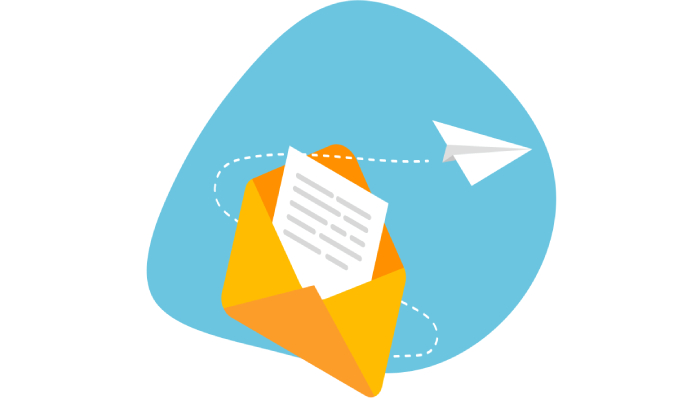
What is Email Warming? Definition and Purpose
Email warming, often called email inbox warming or email account warming, is the deliberate process of gradually increasing email sending volume and engagement rates to build a positive sender reputation over time. This technique helps new or inactive email accounts avoid immediate flags from email providers’ spam filters.
The primary purpose of email warm-up is to establish credibility with mailbox providers by mimicking natural email sending behaviors. This means sending small volumes of emails that get opened, replied to, and interacted with regularly, forming a strong email reputation basis. The process directly enhances the email sender reputation and reduces the likelihood of your emails landing in the spam folder.
Email warmup is especially crucial when using custom email domains or when launching cold email outreach campaigns. Without warming, email providers are likely to classify sudden bursts of outbound emails as spam, undermining cold email deliverability and hurting your email campaign success.
Today, many organizations rely on specialized email warming tools and email warm-up services to automate and optimize this labor-intensive process. Providers such as Warmup Inbox, Lemwarm, Mailwarm, and Warmy.io offer robust solutions that facilitate ongoing sender reputation monitoring and email warmup automation tailored for a variety of email networks and domains.
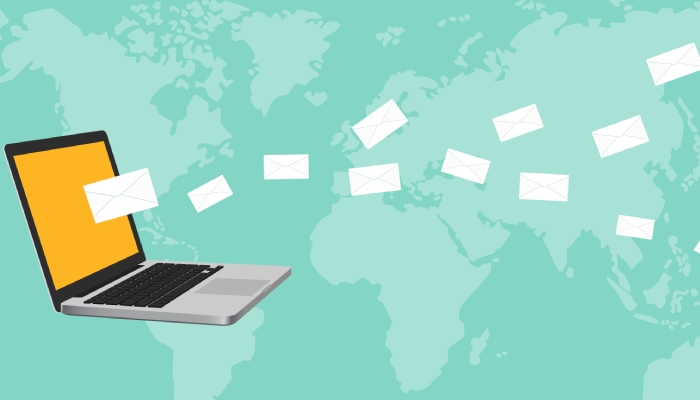
The Science Behind Email Warming: How It Works
The email warmup process revolves around incremental email volume ramp-up combined with calculated interactions that signal trustworthiness to email inbox providers. This scientific approach involves several technical and behavioral components:
Gradual Volume Ramp-Up
Email warmup begins with sending a small number of emails to verified and engaged recipients within a warmup inbox or email warming network. Over time—often defined by an email warmup timeline stretching from days to weeks—the sending volume increases progressively, allowing mailbox providers to adapt organically. This pace prevents sudden spikes typical of spam behavior.
Positive Email Engagement Signals
Critical to the science of email warmup is generating genuine email engagement such as opens, clicks, replies, and minimal spam complaints. Most email warm-up services automate this by sending emails between controlled accounts (warmup inboxes) that consistently respond and engage. This engagement boosts email open rates and reply rates, reinforcing a healthy sender reputation.
Email Authentication Enforcement
Proper email authentication via SPF, DKIM, and DMARC records are mandatory for a successful email warmup process. These protocols confirm that your emails come from a trusted sender, reducing email spam flags and ensuring higher deliverability. Many email warmup tools include email authentication checks as part of their warmup setup services to enhance inbox health.
Avoidance of Blacklists and Spam Filters
One goal of the email warm-up process is to prevent your sending IP or domain from landing on email blacklists, which severely impair email deliverability. Monitoring for email spam filtering and proactively managing sender health enables quick response to any email deliverability issues. Tools like Folderly and InboxAlly specialize in email blacklist monitoring and removal.
Compatibility with Various Email Providers and Tools
To optimize deliverability across leading email inbox providers such as Google, Microsoft, Yahoo, and others powered by services like AWS, SendGrid, and Mailgun, email warmup tools ensure compliance with provider-specific algorithms and prerequisites. This compatibility reinforces trust with different email servers, reducing risks of spam folder placement.

Common Challenges in Email Deliverability without Warming
Skipping or mishandling the email warmup stage can expose senders to several common pitfalls that degrade cold email deliverability:
- Poor Sender Reputation: Without a proper email warmup, sudden, high-volume cold email outreach triggers suspicion within email networks. The lack of prior positive interactions leads to a weak sender reputation, lowering the email reputation score and increasing chances of spam folder avoidance failures.
- Increased Email Spam Flags: Spamming behaviors, either real or perceived, cause email spam filtering to kick in aggressively, causing emails to land in spam folders or get blocked altogether. Common spam flags include high bounce rates, lack of email authentication, or low engagement metrics.
- Email Blacklistings: Rapid untested email volume growth often results in IP or domain blacklisting. Blacklisted senders face significant deliverability losses, necessitating complex blacklist removal processes that delay email campaign progress.
- Lower Email Open and Reply Rates: Poor inbox placement reduces email open rates and reply rates, directly impacting cold email outreach success. Emails lost to the promotions or spam folders rarely get seen by intended recipients.
- Inconsistent Email Inbox Placement: Without warming, email inbox placement becomes unpredictable. Emails might land erratically between primary inbox, promotions, or spam folders, frustrating marketing efforts and reducing email engagement rates.

How Email Warming Tools Automate the Process
Fortunately, email warming tools have revolutionized the email warmup process by delivering automated, scalable, and data-driven solutions that significantly reduce manual effort.
Automated Email Warmup Workflows
Email warmup software leverages automation to send controlled emails, generate natural engagement, and steadily increase sending volumes without manual intervention. Platforms like Warmup Inbox, Lemwarm, Warmy.io, Mailwarm, Folderly, Allegrow, Warmbox, MailReach, and InboxAlly provide intuitive dashboards to track email warmup monitoring, sender reputation scores, and inbox health metrics.
Intelligent Email Warming Features
Advanced email warm-up services incorporate features such as email warmup recommendations that tailor volume ramp-up based on account health and historical performance. These models enable faster yet safe sender reputation building.
Integration with Email Providers and Custom Domains
Many email warming tools, including Nureply, support email warmup compatibility across popular inbox providers such as Google, Microsoft, Yahoo, and iCloud, while integrating smoothly with Webmail platforms or SMTP services like SendGrid, Sendinblue, AWS, and Mailgun. Nureply and similar tools also handle essential email authentication setup—like SPF, DKIM, and DMARC—during onboarding, ensuring strong deliverability pipelines and a trustworthy sender reputation from the start.
Email Campaign Pause and Resumption
Some tools provide email campaign pause functionality allowing a temporary halt during peak times or campaign strategy shifts, then resume with optimized email warmup actions to maintain consistent sender health.
Real-Time Email Warmup Monitoring and Alerts
To ensure ongoing deliverability optimization, these tools offer email alert systems that notify users about potential email deliverability issues, email blacklist risks, or engagement dips. This proactive approach helps lead generation and sales teams maintain pristine email sender volume and sender health.
Cost-Effective Email Warmup Pricing and Trials
Various email warmup software providers offer competitive email warmup pricing models aligned with business sizes and campaign needs. Free email warmup trials allow users to evaluate email warmup features and results before full adoption.
By integrating automated email warmup tools and adhering to email warmup best practices, organizations can significantly improve their email deliverability score, avoid spam folder setbacks, and maximize the impact of their cold email outreach campaigns. This investment safeguards sender reputation while enabling consistent growth in email engagement and revenue outcomes.

Key Features to Look for in an Email Warming Tool
When selecting an email warming tool, several core features are critical to ensure the email warmup process effectively enhances your sender reputation and improves email deliverability. Understanding these features can help sales teams, marketers, and lead generation professionals avoid email deliverability issues and reduce the risk of landing in the spam folder.
Automated Email Warmup and Customization
The best email warm-up services, including platforms like Warmup Inbox and Lemwarm, offer automated email warmup functionalities. This automation allows for scalable email account warming by gradually increasing email sender volume, mimicking natural email behaviors. Look for tools that also provide customizable warmup actions such as reply simulation, email open triggers, and dynamic email bumpers, which help boost email engagement and inbox reputation.
Warmup Network and Warming Interactions
A strong email warming network is essential. Tools like Warmy.io and Mailwarm leverage vast verified warmup inboxes across various email providers such as Google, Microsoft, Yahoo, and iCloud, allowing your emails to interact naturally with legitimate recipients. This interaction improves your sender health and reduces the chance of triggering email spam filtering. Avoid tools with limited or closed networks, as this may limit the authenticity of interactions and reduce the effectiveness of inbox warming.
Real-Time Monitoring and Reporting
Email warmup monitoring features provide insights into the email deliverability score, email reputation score, and sender reputation improvements over time. Services like Folderly and Allegrow excel in offering comprehensive dashboards that track email open rates, spam folder placement, and reply rates, enabling you to fine-tune your email outreach strategy continually. Real-time email alerts can help address email spam flags quickly to mitigate any danger to your sender reputation.
Email Authentication Support
Tools must support setup and validation of essential email authentication protocols—SPF, DKIM, and DMARC—as these protocols are pivotal for defending against email spoofing and improving email inbox placement. Email warm-up services that assist in email authentication integration can significantly boost your email sending reputation and diminish risks of blacklisting.
Compatibility With Custom Email Domains and Email Providers
Since many businesses use custom email domains, especially for cold email campaigns, ensure the email warming tool supports custom domain integration. Furthermore, compatibility with popular email providers (e.g., Outlook, Zoho, SendGrid, Mailgun, and Sendinblue) is crucial for seamless deployment of automated email warmup. Apps like InboxAlly and MailReach are notable for wide email provider compatibility and simple email warmup setup.
Security and Compliance
Security is paramount as email warmup tools interact with your email account. Reputable providers should follow strict security protocols, including data encryption and adherence to GDPR or other relevant privacy standards. This reassures marketing and lead generation professionals that their email outreach and customer data remain confidential.
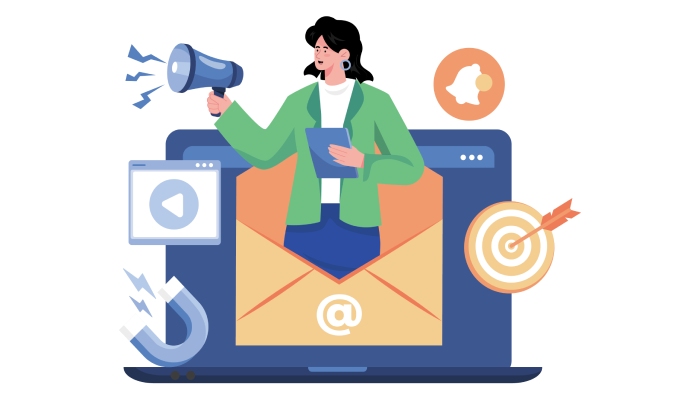
Step-by-Step Guide: Setting Up Your First Email Warm-up Campaign
Launching your initial email warmup campaign involves several deliberate steps aimed at safeguarding your email reputation and maximizing cold email deliverability.
- Step 1: Choose the Right Email Warmup Service: Evaluate email warmup pricing, features, and trial options on platforms like Warmbox or TrulyInbox to find a service that fits your budget and goals. Many tools offer free trials to experience key email warmup benefits before committing.
- Step 2: Connect Your Email Account: After selecting a tool, link your email account. This connection enables email warmup automation to commence the email inbox warming process. Verify your custom email domain and ensure proper email authentication settings are in place.
- Step 3: Configure Warmup Parameters: Set your desired email volume ramp-up schedule according to your typical email sending patterns. This helps maintain inbox health and prevents sudden spikes that can trigger spam filters. Some tools recommend pausing existing email campaigns or cold email outreach during warmup to avoid inflating sender reputation improperly.
- Step 4: Initiate Automated Email Warmup: Activate the automated email warmup that starts sending and receiving emails with the warmup inbox network. The tool gradually increases your email sender volume, simulating authentic email engagement such as opens and replies, essential to improving your sender health and avoiding the promotions folder or spam folder
- Step 5: Monitor Campaign Progress: Use the email warmup monitoring dashboards to track metrics like email open rate improvement, email reply rate, and inbox placement. Look out for email alerts concerning any negative email spam flags or blacklisting that need prompt resolution.
- Step 6: Optimize and Scale: After completing the warmup timeline, evaluate your sender reputation and resume or launch cold email campaigns with confidence. Continue email deliverability optimization using the email warmup benefits and insights gained to maintain a strong email sender reputation.
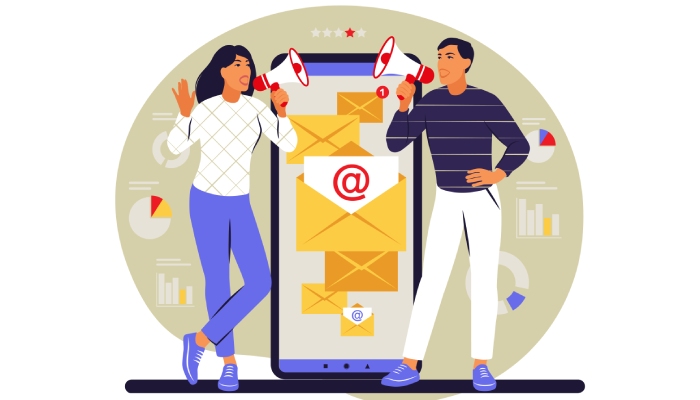
Best Practices for Email Warming to Maximize Deliverability
Adhering to email warmup best practices ensures your email reputation grows steadily, enabling successful cold email outreach and high-quality email marketing deliverability.
Gradual Volume Increase
Ramp up your email sender volume gradually over weeks or months, depending on your domain age and previous email sending behavior. Avoid sudden surges, which can trigger email spam filtering and diminish email inbox reputation.
Use a Dedicated Warmup Inbox
Utilize dedicated warmup inboxes provided by email warm-up services like Lemwarm or Warmy.io to foster genuine email interactions. This helps maintain high email engagement rates, critical for sender reputation and inbox placement.
Maintain Consistent Email Authentication
Confirm your email authentication protocols are always correctly configured throughout the email warmup process. Inconsistent authentication can undermine the efforts to improve your email sender reputation and increase vulnerability to email blacklists.
Avoid Blacklists and Spam Traps
Regularly check your email sender health with tools such as Folderly that identify if your IP or domain appears on any email blacklist. Cleaning your email lists and avoiding spam traps keep your deliverability on track and reduce email deliverability issues.
Personalize Cold Email Campaigns Post-Warmup
Once warmed up, implement personalization in cold email campaigns to improve email open rates and reply rates. Personalization signals positive email engagement to providers like Google and Microsoft, reinforcing your email reputation.
Integrations and Compatibility with Popular Email Platforms
Email warmup tools must seamlessly integrate with popular email providers and email marketing platforms to ensure smooth email outreach and efficient inbox warming.
- Major Email Providers: Leading tools support domains hosted by Google (Gmail), Microsoft (Outlook, Office 365), Yahoo, iCloud, AOL, and Yandex. Compatibility with AWS-hosted services, SendGrid, and Sendinblue further enhances flexibility for marketing teams and recruiters.
- CRM and Marketing Platforms: Some email warm-up services, such as MailReach, boast integration with CRM platforms and marketing automation software to streamline email campaign management alongside inbox warming.
- API and SMTP Support: Advanced users benefit from warmup inbox services offering API access and SMTP relay compatibility, facilitating custom email warmup workflows and integration with unique email representation systems.
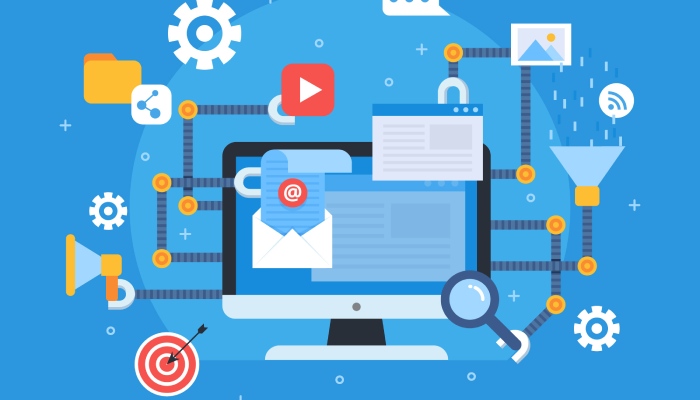
Comparing Top Email Warming Tools: Pros and Cons
Warmup Inbox
- Pros: Strong automated email warmup features, extensive email warming network, and excellent email warmup monitoring tools. Particularly suited for cold email outreach by lead generation professionals.
- Cons: Pricing may be higher compared to some competitors; interface can be complex for beginners.
Lemwarm
Pros: Seamless integration with popular email providers such as Gmail and Outlook, efficient email inbox warming, and customizable email warmup duration. Ideal for startups and smaller sales teams.
Cons: Fewer email warm-up features compared to enterprise-focused tools; limited support for custom email domains.
Warmy.io
Pros: Comprehensive email deliverability optimization, powerful email warmup automation, and real-time email warmup analytics. Also supports email spam flag tracking and email blacklist monitoring.
Cons: Requires technical knowledge for initial setup; pricing tiers might be restrictive for very high email sender volume users.
Mailwarm
Pros: User-friendly dashboard, great for users eager to boost email sender reputation quickly, and efficient spam folder avoidance capabilities.
Cons: Limited email warmup monitoring and fewer integrations with email providers such as SendGrid or Zoho.
Folderly
Pros: Holistic email deliverability tools combining email warm-up with email reputation diagnostics, email campaign insights, and email spam filtering analysis. Suitable for large marketing teams.
Cons: Can be overwhelming due to breadth of features; requires investment in training to maximize.
Beyond Warming: Additional Strategies to Keep Emails Out of Spam
Maintain Strong Email Authentication and Security
Even with the best email warmup software, neglecting email authentication leaves you vulnerable to email spam filtering and phishing attacks. Ensuring that SPF, DKIM, and DMARC records are properly configured is critical for maintaining email sender health. Using a custom email domain verified with these protocols helps build trust with leading email inbox providers like Gmail, Outlook, and Yahoo.
Craft High-Quality, Relevant Content for Cold Email Campaigns
Cold email outreach success isn’t just about sender reputation — the content quality deeply influences email inbox placement. Emails that are personalized, concise, and rich in value minimize the probability of being flagged as spam. Avoid spammy keywords, excessive links, and attachments that trigger spam folder filters.
Monitor Email Engagement and Optimize Sending Patterns
Low email open rates, poor email reply rates, and limited engagement rate signal poor email reputation to email networks, increasing the risk of landing in the promotions folder or spam folder. Regularly analyze email alerts related to bounce rates and spam complaints to adjust email sending frequency and timing. Employ email bumpers (follow-up emails) cautiously to nurture engagement without overwhelming the recipient.
Consistent List Hygiene and Compliance
Maintaining clean, permission-based mailing lists prevents spam traps and email blacklist risks. Use double opt-in methods and validate emails periodically. Adhering to email regulatory standards such as CAN-SPAM and GDPR complements technical efforts in improving email deliverability.
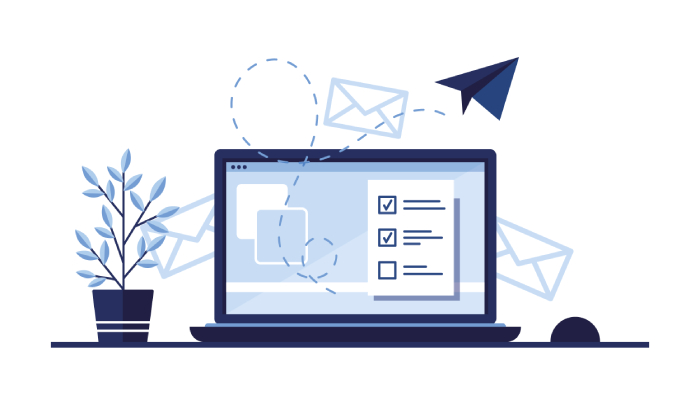
Future Trends in Email Deliverability and Warming Technology
AI-Driven Email Warmup and Deliverability Optimization
Artificial intelligence and machine learning techniques are transforming how email warmup services function. Future email warmup tools like Allegrow and InboxAlly are integrating AI to dynamically adjust the email warmup process based on real-time inbox health metrics and email traffic quality data. This results in more intelligent email volume ramp-up and personalized email warming interactions tailored to each email network.
Enhanced Cross-Provider Compatibility and Customization
As email inbox providers diversify their spam algorithms—including Google, Microsoft (Outlook, Office 365), Yahoo, iCloud, AOL, and niche services such as Yandex and Zoho—email warmup software development is focusing on granular customization to align with provider-specific requirements. This includes better email warmup compatibility with AWS SES, SendGrid, Mailgun, and Sendinblue infrastructure.
Integration of Email Warmup with Broader Email Security Suites
Future email deliverability services will likely merge email warmup features with comprehensive security solutions that manage email blacklist removal, spam folder avoidance, and email authentication automation in a single platform. This amalgamation helps lead generation professionals and recruiters streamline cold email outreach campaigns with reduced risk of email deliverability issues.
Real-Time Email Deliverability Feedback and Automation
Emerging trends point toward real-time email engagement data feeding back into automated email warmup adjustments. Sales teams and marketing teams benefit from tools that provide immediate insights into email open triggers and allow adaptive email warmup actions to maximize inbox placement.
Greater Adoption of Warmup Inbox Networks and Collaborative Email Engagement
Max L., Mike B., and Etienne D., noted email deliverability experts featured on G2, highlight the benefits of collaborative warmup inbox networks like MailReach and Warmbox, where validated human-like email interactions improve the email sender reputation in a more organic manner. Expanding these networks promises enhanced email inbox warming outcomes and faster email reputation recovery.

FAQs
What is the ideal email warmup duration for a new email account?
The email warmup timeline typically ranges from 2 to 6 weeks depending on the email sending volume and the provider’s sensitivity. Automated email warmup services recommend gradual volume ramp-up to build a strong sender reputation without triggering spam filters.
Can email warmup prevent my emails from landing in the spam folder entirely?
While email warmup significantly improves email deliverability and reduces the chances of emails going to spam, it must be combined with proper email authentication, quality content, and list hygiene to fully avoid spam folder placement.
How do email warmup tools help improve my email sender reputation?
Email warming tools automate the process of sending well-timed emails to warmup inboxes that interact (open, reply, mark safe), signaling email inbox providers about your engagement and trustworthiness, thus enhancing your email sender reputation and overall deliverability.
Are email warm-up services compatible with all email providers?
Most leading email warmup tools support major email inbox providers such as Gmail, Outlook, Yahoo, iCloud, and others including custom email domains registered with providers like SendGrid, AWS, and Mailgun. Specific compatibility may vary, so checking tool specifications is advised.
What are the risks of skipping email account warming before a cold email campaign?
Skipping email warmup risks poor email delivery and immediate placement into spam or promotions folders due to low sender reputation scores, resulting in reduced email open rates and wasted outreach efforts.
Can automated email warmup replace manual email inbox warming?
Automated email warmup outsources time-consuming tasks and provides a consistent, scalable email warmup process but should be supplemented with manual checks especially for complex campaigns with high email volume.
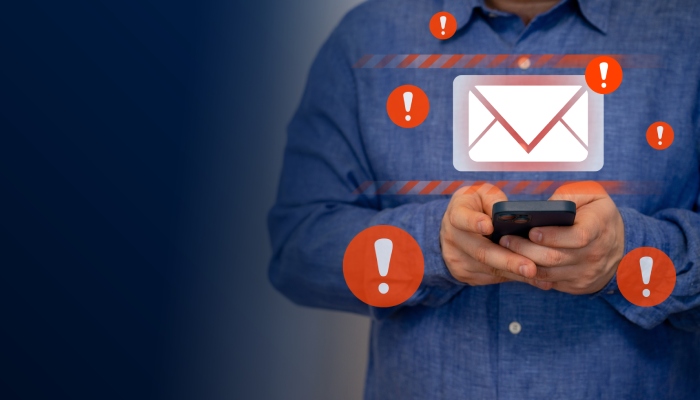
Key Takeaways
- Proper email warmup is critical to maintaining sender reputation and achieving strong email deliverability in cold email campaigns.
- Choosing the right email warming tool depends on factors such as automation features, monitoring capabilities, pricing, and compatibility with your email provider.
- Beyond warmup, strategies like strong email authentication, personalized content, list hygiene, and engagement monitoring are essential to avoid spam folder placement.
- Emerging AI-powered email warmup services and integrated deliverability suites represent the future of smarter, adaptive email outreach.
- Leveraging robust email warm-up services and following best practices helps sales and marketing teams sustain healthy inbox placement and maximize email open rates.



